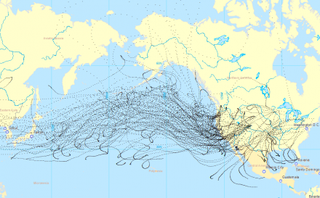Fukushima Disaster Tested Alaska's Radiation Monitoring Capability, Says New Report

Wednesday, March 07 2012
Nearly a year ago, the Fukushima Daiichi nuclear power plant in Japan suffered a catastrophic meltdown after being damaged by a tsunami. In the wake of that disaster, the federal government put their radiation monitoring into gear and tracked fallout levels at 167 sites across the country. Now, the United States Geological Survey has issued a report releasing their final data, and as expected, some of the highest levels of radiation were detected at Alaska sites.
"We especially wanted samples that were closest to Japan, so we obtained samples from Alaska and Washington," says Greg Wetherbee, one of the authors of the study. "There were three sites in Alaska that had activity."
While the amounts were well within safe limits, the USGS did see a spike of Cesium-134 at its Unalaska site. They detected 55 picocuries per liter in their sample, which is a fraction of the amount of radiation in a banana but still higher than normal background levels in the atmosphere. They also detected a small amount of Cesium-134.
Mark Niles also worked on the report. He says that this is the first time the USGS has ever been involved in such large-scale monitoring of radiation across the country.
"One of the things that the federal government agencies were tasked with in this incident was to ask if this had this been a larger release, a more serious release, or a release from a source that was much closer to the U.S., what would you do?," says Niles. "We realized that not only could we do this as a table-top exercise -- we could actually do it. We could say, 'Let's see if this works.'"
The USGS has previously used this monitoring system to track acid rain or pathogens that could hurt crops. He says that it was a pleasant surprise when they discovered that the data could be used for another purpose, and that they now feel better prepared to handle a potential crisis in the United States. Niles adds that he was also impressed by how quickly the state spread their information as they were monitoring radiation levels in the month after the Fukushima crisis.
"They were pro-active, they followed up, and when the information came out, they were very interested in disseminating it at the local and state level,” says Niles.
The report and maps tracking the fallout can be found here.



